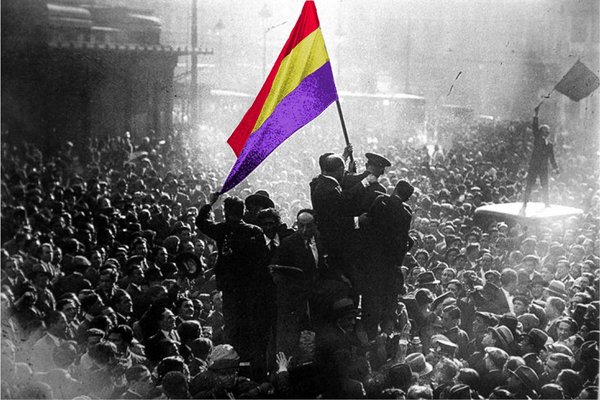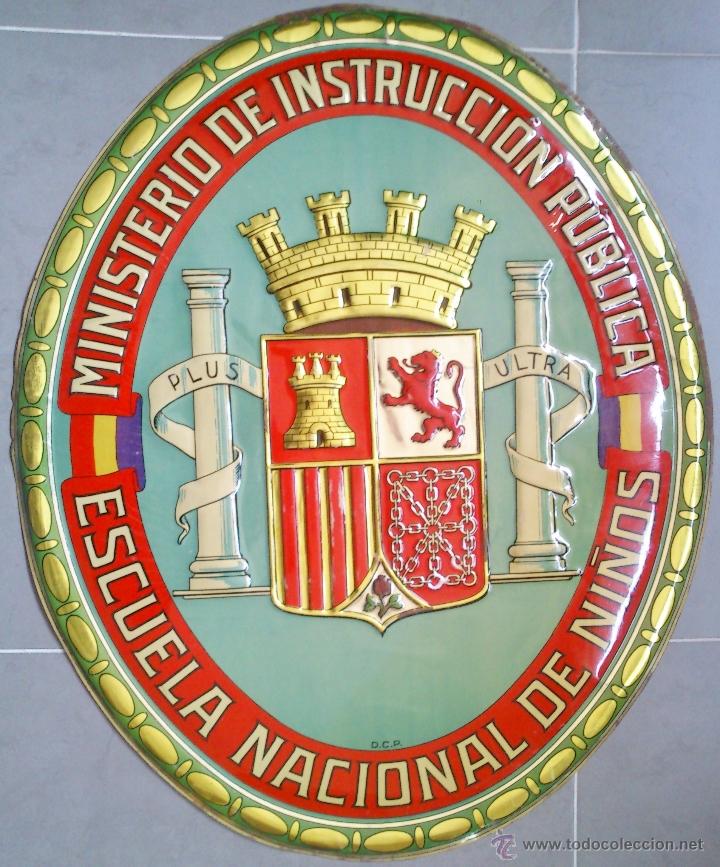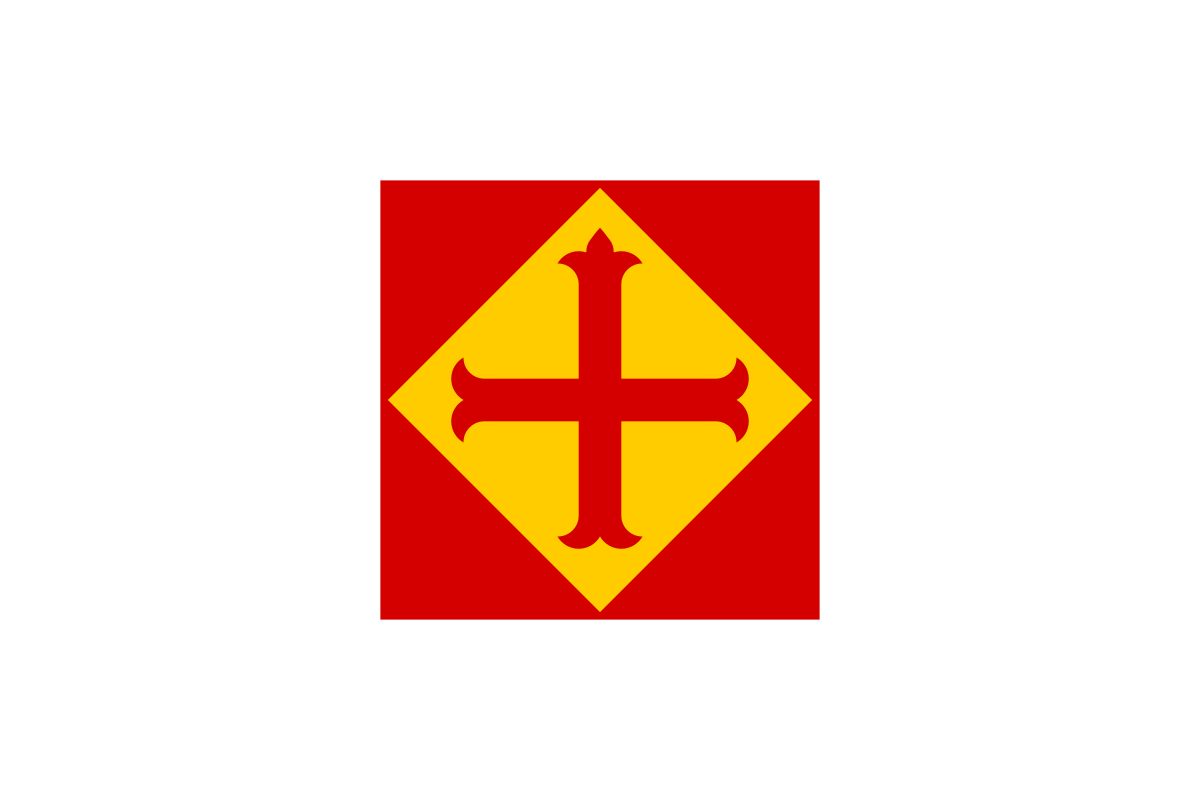The second Spanish Republic
The second spanish republic was the democratic republican administration that existed in Spain from 1931 to 1939. It was preceded by the fascist dictatorship of Miguel Primo de Rivera (1923-1930) and by Berenguer (a less strict dictator that ruled from 1930 to february of 1931).
Spanish King Alfonso XIII had supported the dictatorial regime of General Miguel Primo de Rivera, so he became a symbol of oppression to the working class and to a bast majority of spanish citizens. When Berenguer became head of state, citizens started speaking out their republican desire.
Therefore, atransition to a republic started taking place:
Therefore, atransition to a republic started taking place:
- The “Pact of San Sebastian” was signed by the Republicans to overthrow the monarchy and establish a republic.
- Furthermore, the day 12 of april of 1931, the republican political parties obtained the mayority of votes in the municipal elections. In response to the anti-monarchical campaign, King Alfonso XIII proclaimed a suspension of his royal power, abdicated and immediately exiled himself on the same day. The Spanish King would eventually settle in Rome.
- Two days later, the 14 of april of 1931, the Second Spanish Republic was officialy proclaimed
 |
| Municipal elections in 1931 |
 |
| Proclamation of the Second Spanish Republic, 14 of apil 1931 |
 |
| Manuel Azaña |
 |
| Niceto Alcalá-Zamora |
The Republican constitution of the Second Spanish Republic would be effective from 1931 until 1939. It established new legal procedures and also changed the symbols of the country. The National Anthem was changed to the Himno de Riego and the flag of Spain became tricolored (red-yellow-purple) with horizontal stripes. Additionally, Spain's regions had right to autonomy, which Catalonia declared in 1932 and the Basque Country in 1936.
 https://youtu.be/vFYgsaf-xYc (himno del riego)
https://youtu.be/vFYgsaf-xYc (himno del riego)The reformist republic did lots of changes in Spain, besides the ones I talked about.
The goverment of Niceto Alcalá-Zamora wanted people to alphabetize, so they increased the education budget a 50%, opening over 5000 schools a year.
- They limited the power of the catholic church. They forbade religious orders from giving education, they took their lands away and they made priests pay taxes.
- They modernizated the army, making it democratic and professional
- They made a group of decrees that helped peasents and tenants. There was an agricultural reform law which took away lands from the high nobility
- They let autonomous communities that had a nationalist feeling create their own goverment. This is how the Generalitat was founded
| S |
| A new class, from a school founded in the Second Republic |

The application of these laws brought lots of disadvantages to the clergy, the nobility, and the rich landowners, as well as to the army. This groups of political right reorganized to take measures aagainst the new govermental laws. In 1933 they created the Confederación Española de Derechas Autónomas (CEDA) which counted with a big number of affiliates
.
At the same time, and in the same way, fascist groups gained strength; las Juntas de Ofensiva Nacional – Sindicalista (JONS) y la Falange Española, which had as supreme head José Primo de Rivera. This parties were minoritary, but they realised a great agitation against the ones they considered the evolution of marxism and the danger of a bolshevik revolution. These facts harmed the goverment, even provocating a failed coup of state.
The conservative biennium
In 1933, under the pressure of the sectores against the republic, Manuel Azaña (head os state) resigned, and the president of the republic, Niceto Alcalá Zamora convened elections for November.
These elections were characterised because they were the first elections in which women voted. The influence of the feminist vote gave force to the right (also benefited because of its organisation in coalition) because of the closeness of women with the catholic church and its conservatism. Meanwhile, the political left was divided. Taking these reasons in mind, the political party that won these elections was CEDA (católica confederación de derechas autónomas).
Although CEDA was the most voted polytical party, with Jose María Gil-Robles as leader, the president of the republic, Niceto Alcalá-Zamora asigned the form of the goverment to Alejandro Lerroux, leader of the Partido republicano radical. This anomaly is explained because CEDA and its leader woke up a lot of hate between the polytical left and republicanism in general This is how the goverment came in hands of the Partido Radical Republicano, a polytical party of radical center.
A really fragmented parlament was formed, with 21 polytical parties, so it would be very difficult to govern. In fact, contrasting with the stability of the first biennium, this one had 10 different governs, in an average duration of 72 days per govern.
In 1933, under the pressure of the sectores against the republic, Manuel Azaña (head os state) resigned, and the president of the republic, Niceto Alcalá Zamora convened elections for November.
These elections were characterised because they were the first elections in which women voted. The influence of the feminist vote gave force to the right (also benefited because of its organisation in coalition) because of the closeness of women with the catholic church and its conservatism. Meanwhile, the political left was divided. Taking these reasons in mind, the political party that won these elections was CEDA (católica confederación de derechas autónomas).
 |
| Coat of arms of CEDA |
| S |
The distingueshed republicans then turned up to the president to make him know he was handing the republic to its enemies by forming a govern that included CEDA. The socialists went further; they interpreted the entrance of CEDA to the govern as the first step of a coup, and at the shout of ¡Antes Viena que Berlín! (better fight fascism and be defeated than letting themselves being destroyed withought fight) they started the revolution they had threatened with and they had been months preparing.
The only place of Spain in which the revolution was presented as a real challenge to the govern was in Asturias, where there was a lot of unemployment, and miners and workers rebelled (around 30.000 men). They burnt churches and they killed 34 religious persons. They took two factories of arms, as well as the cities of Gijón and Avilés, and they besieged Oviedo. In this revolution there were 1,100 killed revolutionaries and 300 in the army, this was a really high quantity. Revolutionaries were tortured and executed. This repression got 30.000 left civils and politicians in jail, including Manuel Azaña, who had nothing to do with the revolution.
 |
| Guardias Civiles arresting revolutionary miners |

The consecuences of this revolution were notables, CEDA increased its influence in the govern, this way, Gil-Robles was named minister of defense and Francisco Franco was named Jefe del Estado mayor.
In 1935, a crisis of the govern bursted. Lerroux´s govern saw itself affected of corruption. The partido republicano radical started losing their credibility until he was destituted. In february new elections were convened, which gave place to the formation of two notably opposite sides: right and left
In 1935, a crisis of the govern bursted. Lerroux´s govern saw itself affected of corruption. The partido republicano radical started losing their credibility until he was destituted. In february new elections were convened, which gave place to the formation of two notably opposite sides: right and left
The triumpth of the Frente Popular and the Start of the civil war (1936)
| Santiago Casares |
- The absolution of the prisioners from the october revolution (1934)
- The aprobation of the Estatuto Catlán (which was anulated previously)
- The transferation of Franco to Canarias and from Emilio Mola to Navarra. They did these transaltion because they wanted to prevent militar risings, but they didn´t dare to remove them from their military position (they could generate lots of hate from the right)
| Santiago Casares |

Plans to finish definetly with the Republic were starting to rise. They were drected by the military that counted with the help of the right political forces, as well as the support from Nazi Germany and Fascist Italy. They started gaining strength.
The 14 of july of 1936 the asasination of the right political lider José Calvo Sotelo was produced by a left radical group. Thise event gave place to the outbreak of the civil war, the 17 of july of 1936.
 |
| The left and republican band (frente popular) in the civil war |
And this is the history of the Second Spanish Republic, an atemporary symbol of fight for spanish and republican left.




No hay comentarios:
Publicar un comentario